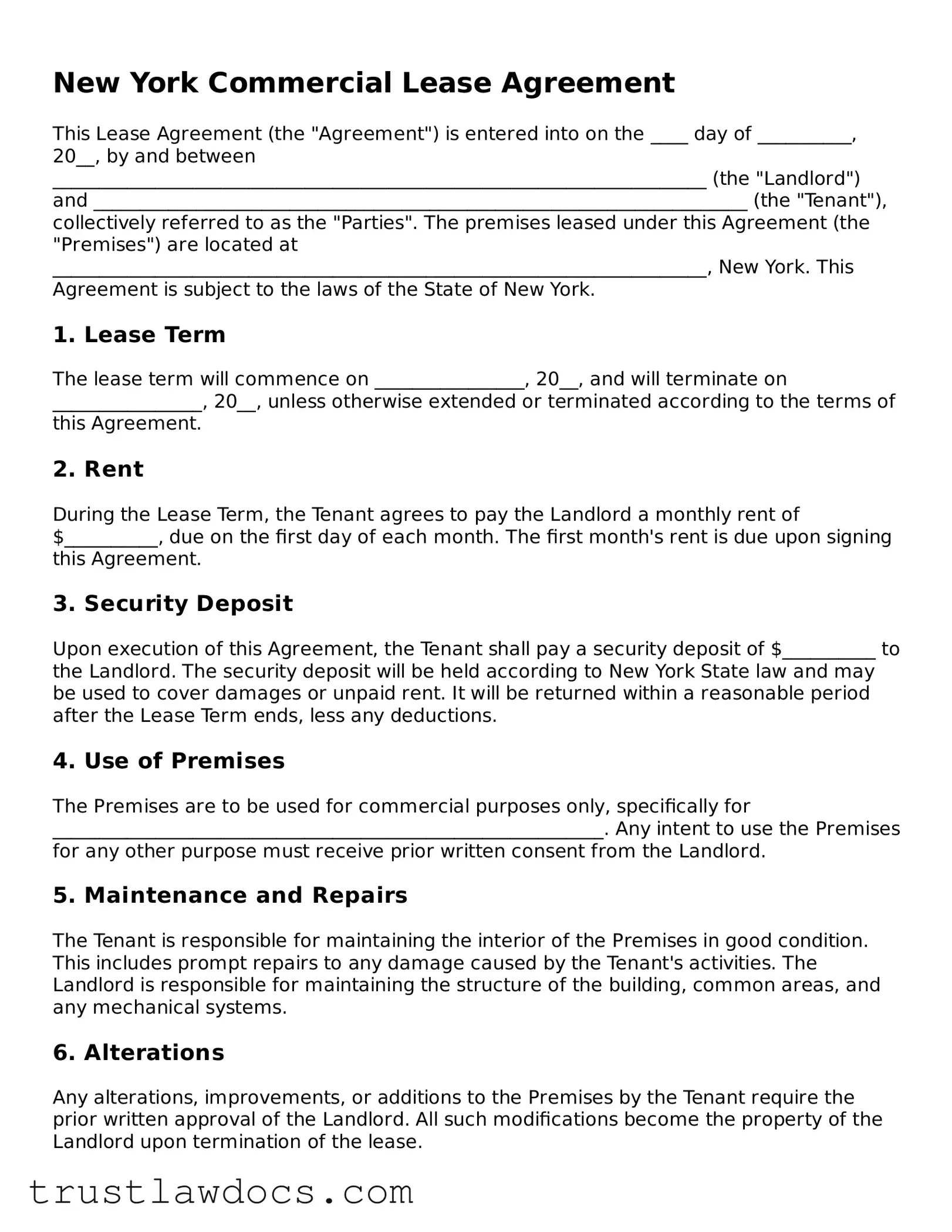New York Commercial Lease Agreement
This Lease Agreement (the "Agreement") is entered into on the ____ day of __________, 20__, by and between ______________________________________________________________________ (the "Landlord") and ______________________________________________________________________ (the "Tenant"), collectively referred to as the "Parties". The premises leased under this Agreement (the "Premises") are located at ______________________________________________________________________, New York. This Agreement is subject to the laws of the State of New York.
1. Lease Term
The lease term will commence on ________________, 20__, and will terminate on ________________, 20__, unless otherwise extended or terminated according to the terms of this Agreement.
2. Rent
During the Lease Term, the Tenant agrees to pay the Landlord a monthly rent of $__________, due on the first day of each month. The first month's rent is due upon signing this Agreement.
3. Security Deposit
Upon execution of this Agreement, the Tenant shall pay a security deposit of $__________ to the Landlord. The security deposit will be held according to New York State law and may be used to cover damages or unpaid rent. It will be returned within a reasonable period after the Lease Term ends, less any deductions.
4. Use of Premises
The Premises are to be used for commercial purposes only, specifically for ___________________________________________________________. Any intent to use the Premises for any other purpose must receive prior written consent from the Landlord.
5. Maintenance and Repairs
The Tenant is responsible for maintaining the interior of the Premises in good condition. This includes prompt repairs to any damage caused by the Tenant's activities. The Landlord is responsible for maintaining the structure of the building, common areas, and any mechanical systems.
6. Alterations
Any alterations, improvements, or additions to the Premises by the Tenant require the prior written approval of the Landlord. All such modifications become the property of the Landlord upon termination of the lease.
7. Insurance
The Tenant will maintain, at their own expense, comprehensive general liability insurance against claims for bodily injury, death and property damage occurring upon, in, or about the Premises. Proof of insurance must be provided to the Landlord upon request.
8. Governing Law
This Agreement shall be governed by and construed in accordance with the laws of the State of New York.
9. Entire Agreement
This Agreement constitutes the entire agreement between the Parties and supersedes all prior agreements and understandings, whether oral or written, relating to the subject matter of this Agreement. No amendment, change or modification of this Agreement shall be valid unless in writing signed by both Parties.
Signatures
IN WITNESS WHEREOF, the Parties hereto have executed this Agreement on the date first above written.
Landlord Signature: ___________________________________________ Date: _______________
Tenant Signature: _____________________________________________ Date: _______________
